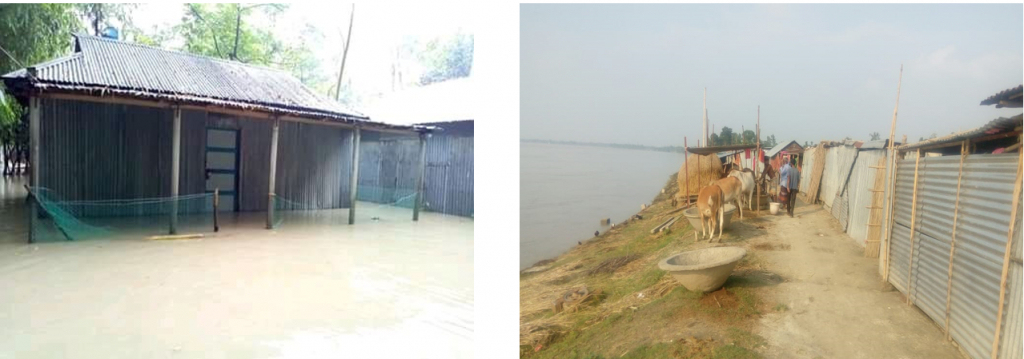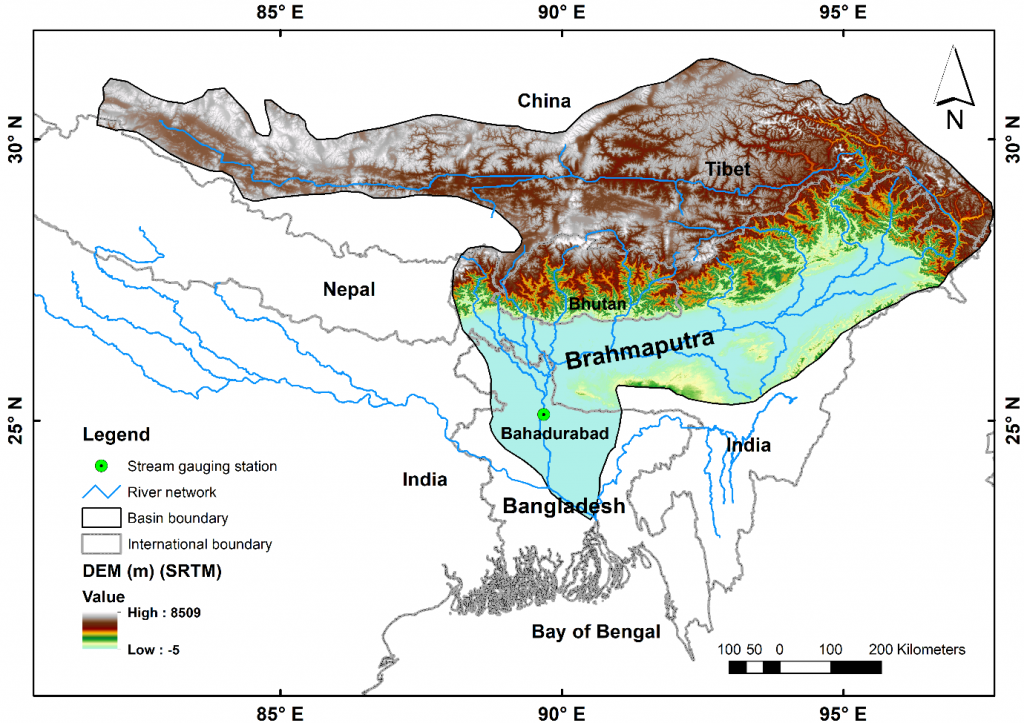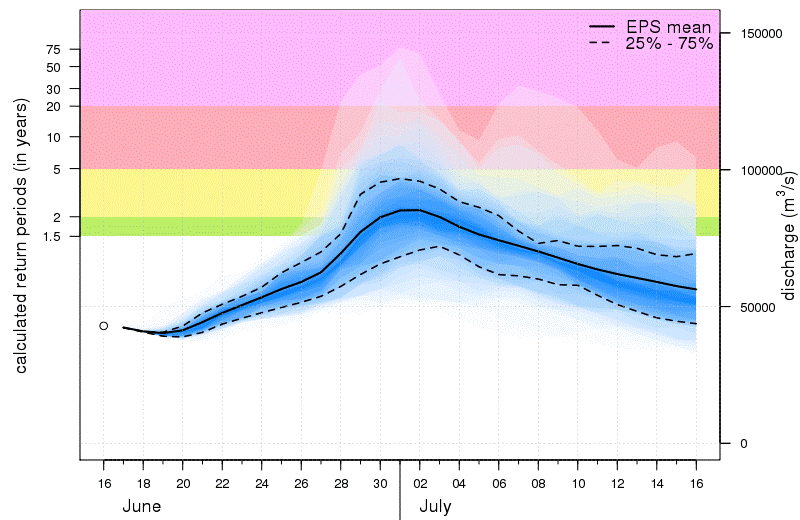The impacts of the 2020 monsoon floods in Bangladesh were devastating with more than 5 million people affected, 41 deaths and tens of thousands of people from low-lying areas being evacuated to flood shelters along with their cattle. Agriculture is one of the sectors most severely affected by floods and 0.15 million hectares of crop land were damaged by two successive floods waves between June and September. Here Md Sazzad Hossain describes how the GloFAS team are working with the Bangladesh Flood Forecasting and Warning Centre and humanitarian partners to improve flood early warning in Bangladesh.

Among the river basins, the Brahmaputra is the most flood prone and annual floods cause severe devastation to lives and livelihoods (see map). Flood early warning plays an important role to reduce damage. Flood forecasters consider three important questions every monsoon season: when will flooding commence, how long it will last, and will there only be one flood or many flood waves? Predicting flood timing and duration with a sufficient lead-time to allow people to respond is an additional challenge.
The Global Flood Awareness System (GloFAS) is produced by the European Centre for Medium-Range Weather (ECMWF) as part of the Copernicus Emergency Management Service and provides operational extended range ensemble flood forecasts with a 30-day lead-time for major world river basins including the Brahmaputra. The GloFAS team from the University of Reading and ECMWF are working with the Bangladesh Flood Forecasting and Warning Centre (FFWC) and humanitarian partners to improve flood early warning in Bangladesh.

Chronology of the floods and GloFAS flood forecast
On 16 June 2020 the GloFAS forecasts anticipated a flood event of approximately ten days duration at the end of June, and by 19 June the signal was even stronger, predicting floods that would exceed the severe 20-year return period floods. With heavy rainfall expected for the next ten days, it was expected the floods would peak on 30 June. Then on 29 June GloFAS forecasted a second flood wave peaking on 16 July. This flood occurred as predicted with the river exceeding its danger level on 11 July and floods continuing until 7 August. Overall, the two flood waves lasted 35 days, which GloFAS forecasts were able to predict with relatively high confidence and a ten days’ lead-time. GloFAS predicted flood severity levels were also consistent with the operational flood response activities in Bangladesh.

Forecast communication
The Flood Forecasting and Warning Centre in Bangladesh now routinely analyses information from GloFAS on potential flood timing and duration following a successful pilot in 2017. For the 2020 monsoon floods, the GloFAS forecast was communicated to government and community stakeholders from national to sub-national levels, with national media broadcasting the risk of potential flooding to warn people.
National and international NGOs, humanitarian agencies and development partners working in relief distribution have also developed Forecast-based Financing (FbF) methods to help their decision-making ahead of flood events, including the UN’s Food and Agriculture Organization, the World Food Programme and the United Nations Population Fund, who are now implementing FbF in the northern flood vulnerable region of Bangladesh, supported by the Bangladesh Red Crescent Society and the International Federation of Red Cross and Red Crescent Societies. Based on the GloFAS forecasts, the FbF programme was set to a pre-activation mode on 4 July, ten days ahead of the predicted flood. This triggered a cash distribution to vulnerable communities in Bogura, Gaibandha, Kurigram, Jamalpur and Sirajganj districts.
The second flood wave continued up to 7 August and afterwards flows receded to normal in the basin in Bangladesh. This period is usually a challenge for flood forecasters, with a second flood wave being possible in August which is commonly the peak of the monsoon season. Using the GloFAS forecasts on 8 August the FFWC was able to issue an outlook that no further major floods were likely in the current monsoon. Such extended range forecasting is critical for agricultural planning and farmers in Kurigram and Jamalpur districts started to sow “Aman” rice or prepare their seed beds for the next growing season. This demonstrates how anticipatory action can help communities to protect their livelihoods by taking appropriate flood preparedness decisions.

Sazzad Hossain is a PhD student in the Department for Geography and Environmental Science and FFWC, Bangladesh.
Acknowledgement
The blog is based on work with Christel Prudhomme, Ervin Zsoter, Shaun Harrigan and Florian Pappenberger (ECMWF), Hannah Cloke, Andrea Ficchì, Elisabeth Stephens (University of Reading), and Arifuzzaman Bhuiyan (FFWC, Bangladesh).
This work is a part of ongoing research supported by Forecasts for Anticipatory Humanitarian action (FATHUM) project under Science for Humanitarian Emergencies and Resilience (SHEAR) research programme of UKRI/FCDO with collaboration of the University Reading, ECMWF, Red Cross Red Crescent Climate Centre, and FWC, Bangladesh to improve flood early warning in Bangladesh.
